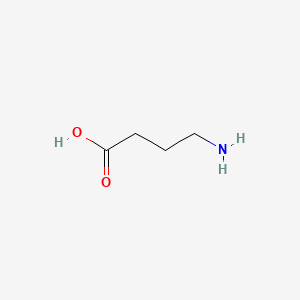| MeSH term | MeSH ID | Detail |
|---|---|---|
| Hemolysis | D006461 | 131 associated lipids |
| Uremia | D014511 | 33 associated lipids |
| Stomach Ulcer | D013276 | 75 associated lipids |
| Kidney Failure, Chronic | D007676 | 51 associated lipids |
| Sarcoma, Experimental | D012513 | 13 associated lipids |
| Arrhythmias, Cardiac | D001145 | 42 associated lipids |
| Adenocarcinoma | D000230 | 166 associated lipids |
| Pain | D010146 | 64 associated lipids |
| Autoimmune Diseases | D001327 | 27 associated lipids |
| Acidosis, Lactic | D000140 | 8 associated lipids |
| Lung Neoplasms | D008175 | 171 associated lipids |
| Hyperglycemia | D006943 | 21 associated lipids |
| Wounds and Injuries | D014947 | 20 associated lipids |
| Kidney Neoplasms | D007680 | 29 associated lipids |
| Adenoma, Islet Cell | D007516 | 7 associated lipids |
| Insulinoma | D007340 | 28 associated lipids |
| Pancreatic Neoplasms | D010190 | 77 associated lipids |
| Inflammation | D007249 | 119 associated lipids |
| Reperfusion Injury | D015427 | 65 associated lipids |
| Colonic Neoplasms | D003110 | 161 associated lipids |
4-aminobutyric acid
4-aminobutyric acid is a lipid of Fatty Acyls (FA) class. 4-aminobutyric acid is associated with abnormalities such as Epilepsy and Premenstrual syndrome. The involved functions are known as Binding (Molecular Function), neuron survival, Process, Uptake and physiological aspects. 4-aminobutyric acid often locates in Microglial, Neurofilament, Neuraxis, Brain region and Neurites. The associated genes with 4-aminobutyric acid are arginine methyl ester, SLC33A1 gene, NKS1 gene, P4HTM gene and ITSN2 gene. The related lipids are pregnenolone sulfate, pregnane-20-one, Pregnanes, Steroids and endogenous steroids.
Cross Reference
Introduction
To understand associated biological information of 4-aminobutyric acid, we collected biological information of abnormalities, associated pathways, cellular/molecular locations, biological functions, related genes/proteins, lipids and common seen animal/experimental models with organized paragraphs from literatures.
What diseases are associated with 4-aminobutyric acid?
4-aminobutyric acid is suspected in Premenstrual syndrome, Epilepsy and other diseases in descending order of the highest number of associated sentences.
Related references are mostly published in these journals:
| Disease | Cross reference | Weighted score | Related literature |
|---|
Possible diseases from mapped MeSH terms on references
We collected disease MeSH terms mapped to the references associated with 4-aminobutyric acid
PubChem Associated disorders and diseases
What pathways are associated with 4-aminobutyric acid
There are no associated biomedical information in the current reference collection.
PubChem Biomolecular Interactions and Pathways
Link to PubChem Biomolecular Interactions and PathwaysWhat cellular locations are associated with 4-aminobutyric acid?
Visualization in cellular structure
Associated locations are in red color. Not associated locations are in black.
Related references are published most in these journals:
| Location | Cross reference | Weighted score | Related literatures |
|---|
What functions are associated with 4-aminobutyric acid?
Related references are published most in these journals:
| Function | Cross reference | Weighted score | Related literatures |
|---|
What lipids are associated with 4-aminobutyric acid?
Related references are published most in these journals:
| Lipid concept | Cross reference | Weighted score | Related literatures |
|---|
What genes are associated with 4-aminobutyric acid?
Related references are published most in these journals:
| Gene | Cross reference | Weighted score | Related literatures |
|---|
What common seen animal models are associated with 4-aminobutyric acid?
There are no associated biomedical information in the current reference collection.
NCBI Entrez Crosslinks
All references with 4-aminobutyric acid
Download all related citations| Authors | Title | Published | Journal | PubMed Link |
|---|---|---|---|---|
| Henningsson S and Rosengren E | The effect of nandrolone, an anabolic steroid on putrescine metabolism in the mouse. | 1976 | Br. J. Pharmacol. | pmid:990594 |
| Kääriäinen K and Vikberg P | Effects of aminooxyacetic acid and baclofen on catalepsy, striatal homovanillic acid increase and antinociception caused by methadone in rats. | 1976 | Acta Pharmacol Toxicol (Copenh) | pmid:990037 |
| Kääriäinen I | Effects of aminooxyacetic acid and baclofen on the catalepsy and on the increase of mesolimbic and striatal dopamine turnover induced by haloperidol in rats. | 1976 | Acta Pharmacol Toxicol (Copenh) | pmid:989685 |
| Meldrum B et al. | [Pharmacologic approach to Papio papio photosensitive epilepsy]. | 1978 | Actual Pharmacol (Paris) | pmid:98965 |
| Arimatsu Y et al. | Cerebral cortical specification by early potential restriction of progenitor cells and later phenotype control of postmitotic neurons. | 1999 | Development | pmid:9895311 |
| van der Knaap MS et al. | D-2-Hydroxyglutaric aciduria: biochemical marker or clinical disease entity? | 1999 | Ann. Neurol. | pmid:9894884 |
| de Toffol B et al. | [Anticonvulsants can aggravate idiopathic generalized epilepsy]. | 1998 | Rev. Neurol. (Paris) | pmid:9894288 |
| Sawaya MC et al. | Effects of anticonvulsant drugs on the cerebral enzymes metabolizing GABA. | 1975 | Epilepsia | pmid:9890792 |
| Chávez JC et al. | Local injection of NaCN into the nucleus locus ceruleus of the rat brain induces respiratory depression. | 1998 | Adv. Exp. Med. Biol. | pmid:9889925 |
| Anan'eva TV | [Role of GABA in the modulation of Na, K-pump activity in nerve cells after irradiation and experimental modification of membrane lipid component]. | 1998 Nov-Dec | Radiats Biol Radioecol | pmid:9889773 |
